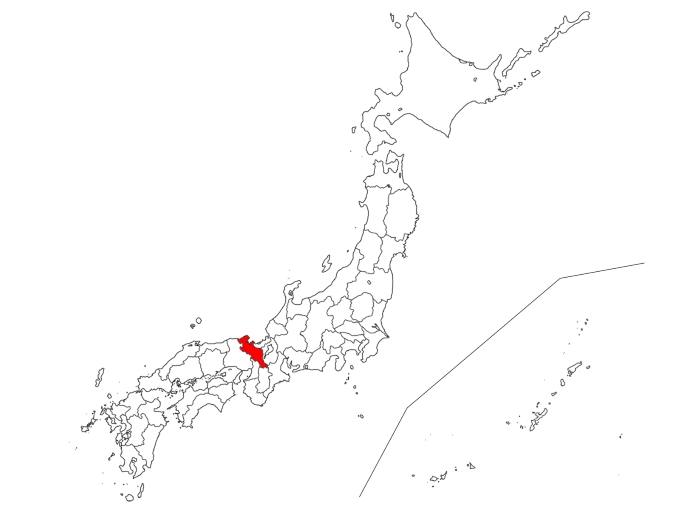Contents
1.Basic Information
The eastern part of Kyoto, known as ‘Rakuto,’ from Kiyomizu-dera in the south to Ginkaku-ji in the north, is home to many famous shrines and temples. The area around Gion, in particular, has retained the traditional Kyoto townscape, allowing visitors to experience the true essence of Kyoto.
Kiyomizu-dera
Kiyomizu-dera has a history of about 1200 years and is registered as a World Heritage Site. This tourist destination representing Kyoto is especially famous for the ‘Stage of Kiyomizu,’ which offers a panoramic view of the city. The temple is known for its blessings of matchmaking and marital harmony. Its approximately 31-meter-tall pagoda is a symbol that can be seen from afar. In the autumn, about 1000 maple trees turn beautiful colors, and you can enjoy a different atmosphere at night with special night-time admissions.
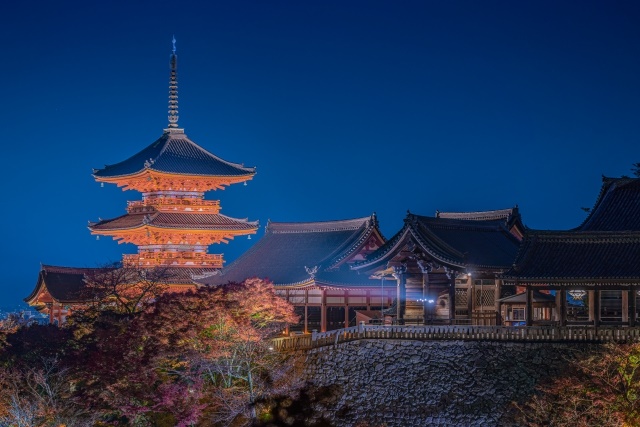
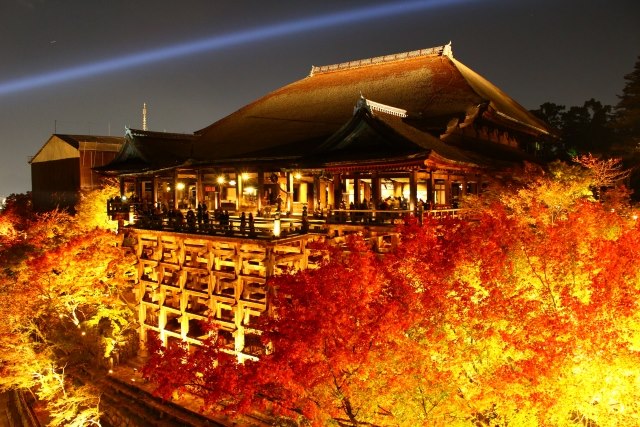
Ginkakuji
Located in Kyoto’s Sakyo ward, Tōzan Jishō-ji (Touzanjisyouji) is referred to as Ginkaku-ji in contrast to the Kinkaku-ji in Kyoto’s Kita ward. This temple originated as a villa constructed by Ashikaga Yoshimasa, the eighth shogun of the Muromachi shogunate, and became a temple after his death. Yoshimasa became head of his family at nine and shogun at fifteen, reflecting his aesthetic sense in this villa throughout his life.
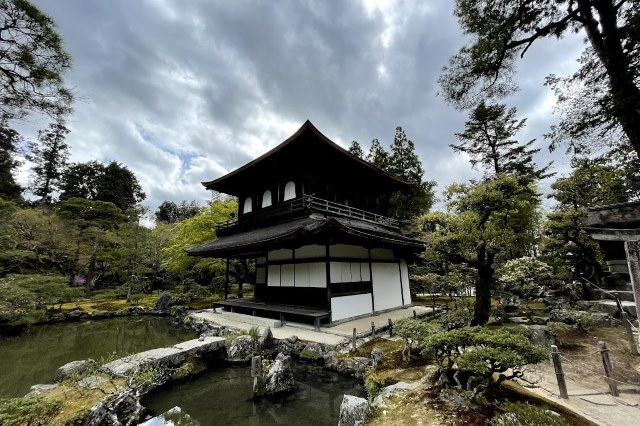
Heian Shrine (Heianjingu)
Heian Shrine was established in 1895 to commemorate the 1100th anniversary of the capital’s relocation to Heian-kyō. It enshrines Emperor Kanmu and is known for its vermillion Daigokuden and the large torii gate in Okazaki, making it a symbol of the Okazaki area, which is dotted with museums and zoos.
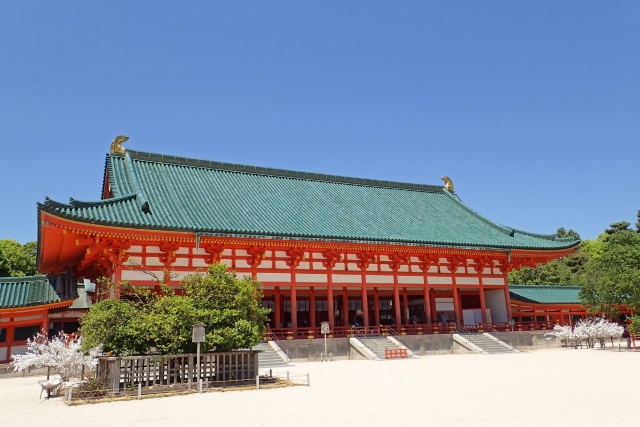
Yasaka Shrine (Yasakajinjya)
Yasaka Shrine, predating the Heian period, protects Kyoto and is affectionately known as ‘Gion-san.’ It is a central shrine among the approximately 2,300 Yasaka shrines across the country and is considered a hub of faith and a beloved power spot.
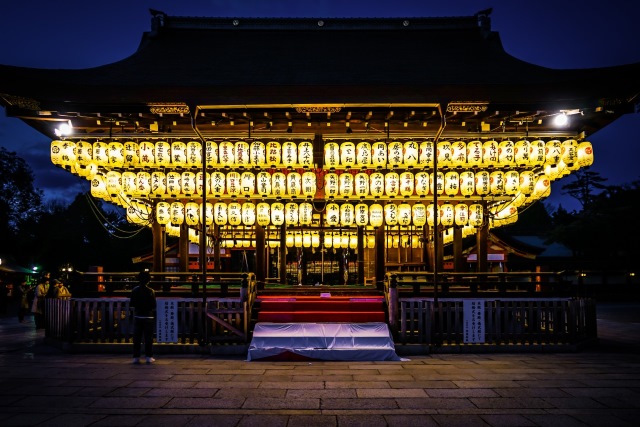
Kenninji
The oldest Zen temple in Kyoto, Kennin-ji, was established in 1202 by a monk who studied Zen in the Song dynasty of China. The temple features the ‘Daiouen,’ a beautiful dry landscape garden, famous fusuma paintings, and ceiling paintings of twin dragons. ‘Karesansui’ refers to a Japanese garden that expresses the scenery of water and mountains with only gravel and stones.
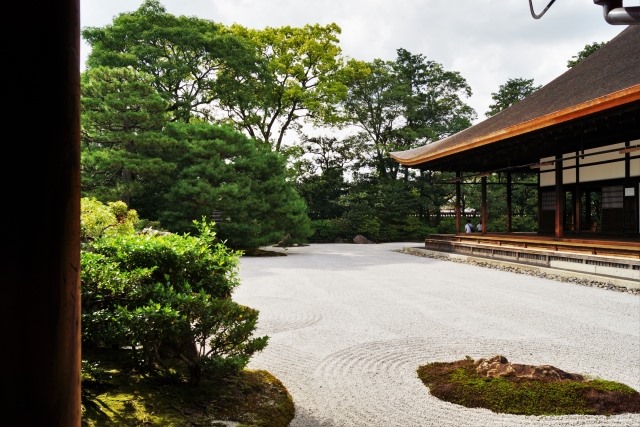
Hounenin
This temple, located just off the Philosopher’s Path, was originally established as a Nenbutsu (chanting of the Buddha’s name) dojo by the monk Honen. The current main hall was rebuilt in 1680. The moss-covered thatched gate exudes a simple yet elegant atmosphere, and the scenery blending with the autumn leaves is truly exceptional.
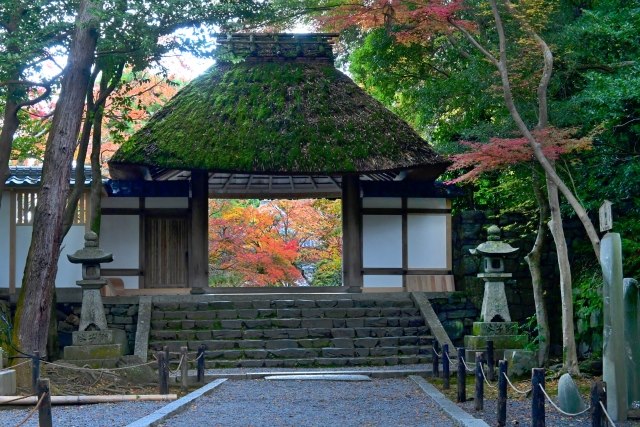
Zenrinji Eikando
Known as the ‘Eikando of Autumn Leaves,’ Zenrin-ji Eikan-do, founded in 853, was originally a dojo for esoteric Buddhism but became a Nenbutsu dojo during the Heian period under the monk Eikan, hence acquiring its name. The temple is famous for its statue of Amida Buddha, known as ‘Mikaeri
Amida,’ and from the two-story pagoda on the hill, there is a splendid view of Kyoto city.
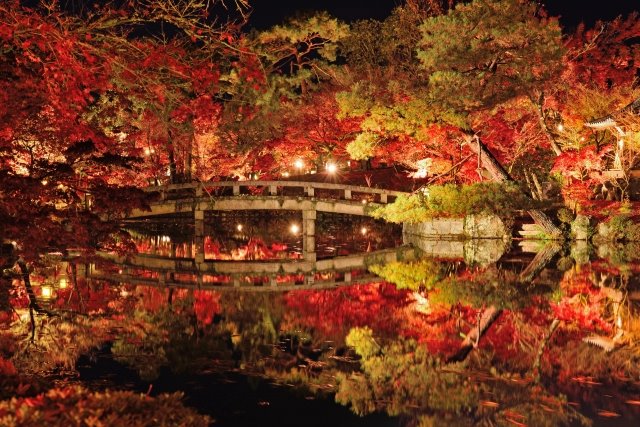
2.Reviews
Sannenzaka
Sannenzaka is a popular tourist spot in Kyoto’s Higashiyama district and part of the approach to Otowa Mountain’s Kiyomizu-dera. The area connects to Yasaka Shrine, Maruyama Park, Kodai-ji, and Kiyomizu-dera, with a variety of souvenir shops, pottery stores, and restaurants along the way, attracting many tourists.
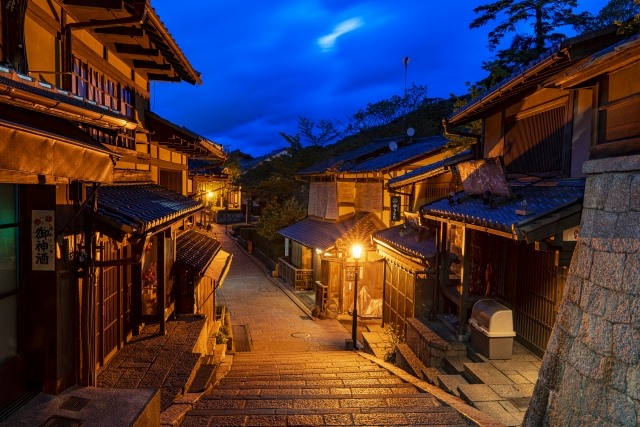
Philosopher’s Path (Tetugaku-no-michi)
The Philosopher’s Path is a roughly 2-kilometer-long promenade that connects Ginkaku-ji with Nanzen-ji (Wakaouji Shrine). The canal that runs alongside it is fed from Lake Biwa, Japan’s largest lake. The path is also famous as a cherry blossom spot, drawing numerous visitors in spring.
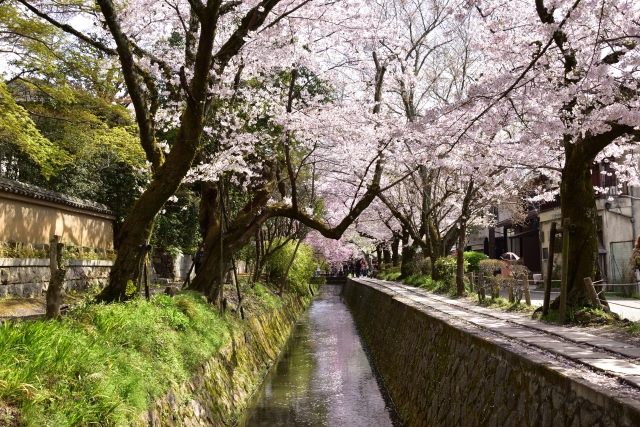
Sanjusangendo
Sanjusangendo was constructed in 1164 by Taira no Kiyomori. The hall is about 120 meters long and has 33 spaces between columns, hence the name. It houses 1001 statues of Kannon, the Goddess of Mercy, including some from the original Heian period construction.
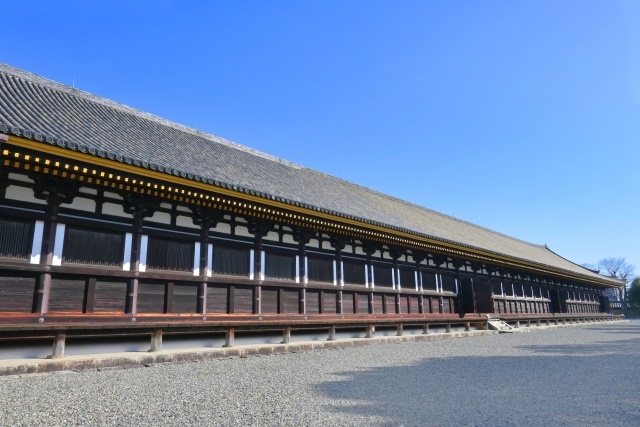
3.Local Food



4.Transportation Information
■ How to get to Kyoto
Kyoto City Official Site (Supports English, Korean, Simplified Chinese, Traditional Chinese, French, and Spanish)
https://ja.kyoto.travel/
5.Map Information
